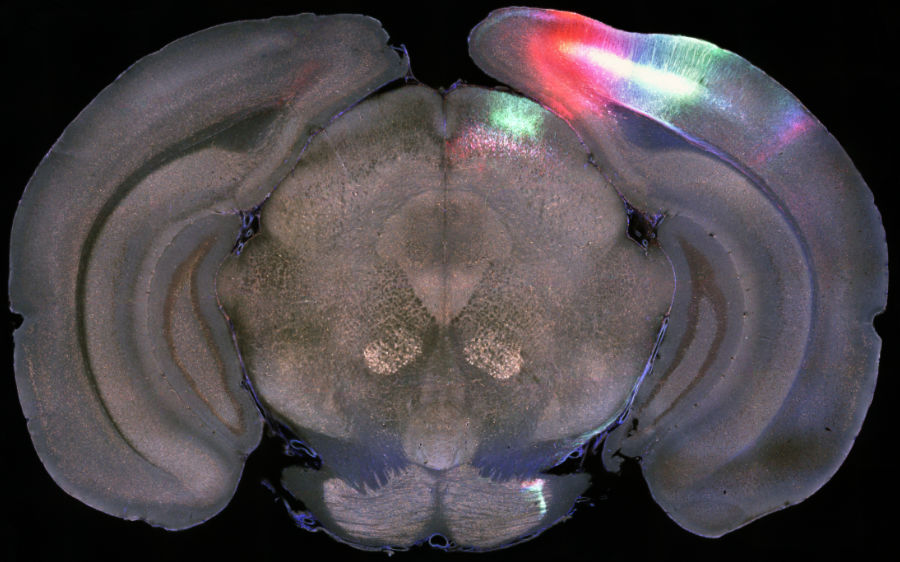StitchIt is a MATLAB package for stitching data acquired via our ScanImage)-based acquisition system (BakingTray). To get started, please read the Documentation. There is a changelog.
With a single command (syncAndCrunch) the user can:
- Pre-process image tiles as they are being acquired.
- Display the last acquired section on the web.
- Automatically stitch data when acquisition completes.
- Send Slack notifications when acquisition completes or pre-processing fails.
- Automatically conduct arbitrary analyses after acquisition completes.
StitchIt has commands for basic tasks such as:
- Stitching subsets of a data set.
- Calculating the average tile for illumination correction.
- Calculating coefficients for correcting for scanning artifacts (experimental).
- Randomly accessing any tile in the dataset.
- Techniques for exploring stitching accuracy.
- Cropping stitched datasets or partition a single stitched dataset into multiple ROIs.
Post-stitching functionality:
- Correction of intensity differences across different optical sections.
- Removal of tile seams in stitched images.
- Down-sampling the dataset to a single multi-page TIFF stack or MHD file.
Clone the repository. Add the code directory and its sub-directories to your MATLAB path. In addition, you will need
to acquire the following and add to your MATLAB path:
- Slack MATLAB
- yamlmatlab
- rsync is needed if you want to use the
syncAndCrunchtool to process data during acquisition. - Additionally, you will need the following MATLAB toolboxes: statistics, parallel computing, and image processing.
If you need more information on the installation procedure, please see the Installation page on the Wiki.
Stitchit will automatically check if it's up to date whenever the user runs syncAndCrunch.
Please use the project's issue tracker for questions, bug reports, feature requests, etc. Please do get in touch if use the software: especially if you are publishing with it! You may also join the StitchIt Gitter room for discussions.
This software is distributed under the GPL v3 licence. This repository may be freely forked and shared so long as this licence is attached.
See btpytools for Python-based helper tools. e.g. to compress raw data or send data to a remote server. You may install those via:
$ sudo pip install btpytools

